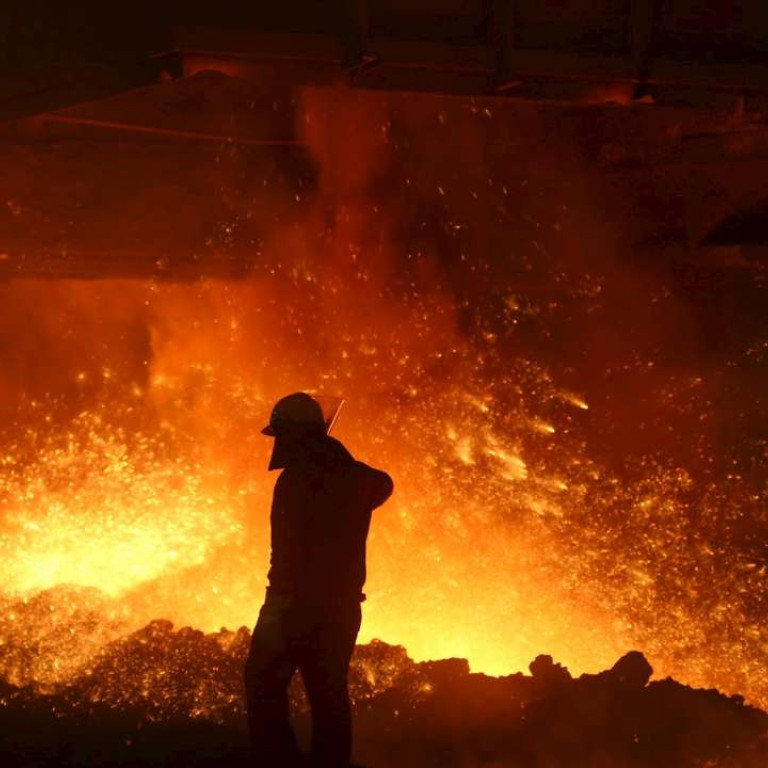
China’s struggling SOEs may face new challenges in gaining support from government, analysts say
Contingent liabilities related to China’s state-owned enterprises are the biggest risk to the mainland Chinese economy, a poll of investors, intermediaries, issuers and regulators by Moody’s Investor Services has found.
A number of solutions have been suggested to resolve state firms’ liabilities, but analysts believe further details are necessary before their success can be seen.
According to Moody’s research, liabilities equivalent to about 115 per cent of China’s gross domestic product are owed by SOEs. Should some of these entities have trouble honouring their obligations, the government historically would have stepped in with financial support.
“Government support towards SOEs is changing,” said a report from S&P Global Ratings.
The report cited as examples a number of bond defaults by SOEs including Sinosteel Corporation late last year, and local government-owned SOEs such as Bohai Steel Group and Dongbei Special Steel Group this year. These defaults “signal the central government’s aim to restructure struggling SOEs rather than simply keep propping them up financially,” the report said.
A contingent liability is a potential obligation that depends on the outcome of future unknown developments.
“The greater number of defaults in the onshore bond market is a positive sign for dealing with the problems of moral hazard,” Kai Hu, senior vice president, corporate finance group at Moody’s told a media round table.
A moral hazard is a situation where a party is likely to take greater risks because they believe that someone else will bear the costs of those risks.
Chris Leung, senior economist group research at DBS bank in Hong Kong says that it is important to draw a distinction between different types of SOEs when it comes to the problems they face. “SOEs in the steel industry are particularly vulnerable because of overcapacity problems,” he says, adding that the property sector is also at risk.
According to the S&P Global Ratings report, SOEs owned by local governments are more likely to struggle because local governments’ capacity and incentives to support companies in trouble may be diminishing.
Last month the People’s Bank of China suggested that as the central government had room to borrow further, they might do so as part of a move to help companies to deleverage.
Commenting on the move, Oliver Rui, professor of finance and accounting at the China European International Business School said: “Swapping local government debt or corporate debt with central government debt is only a temporary solution.”
In the late 1990s and early 2000s Beijing orchestrated a series of debt for equity swaps in which state owned banks took ownership stakes in SOEs that were unable to meet loan payments.
However, Hu from Moody’s said that this solution was no longer an option.
“Today’s situation is more complicated as there are private enterprises, both domestic and foreign, as well as a variety of banks, and people who have invested in wealth management products involved in the system,” he said.
The Moody’s survey also asked what respondents thought would be the main ways in which Chinese authorities would attempt to resolve risks related to the liabilities of both SOEs and other Chinese corporates.
A number of different strategies have been suggested. These include mergers between SOEs, bank debt rollovers, equity injections and debt for equity swaps among others. The overwhelming response was that a combination of the different methods would be necessary.
Some local governments are already taking action. Shanxi’s top coal mining SOEs merged in June, and Guangdong has closed 2,333 local zombie SOEs in the past few years, according to a research from HSBC.
Hu said most companies would also need support through a restructuring process that could involve other factors such as a management change.
“A debt equity swap would only be the beginning for resolving a distressed company’s problems,” said Hu. “At this point in time it is not clear how things will work. The concept of a company in distress no longer being allowed to borrow further from the market, but rather to default or to discuss with stakeholders and arrange some sort of debt equity swap is new in China.”

